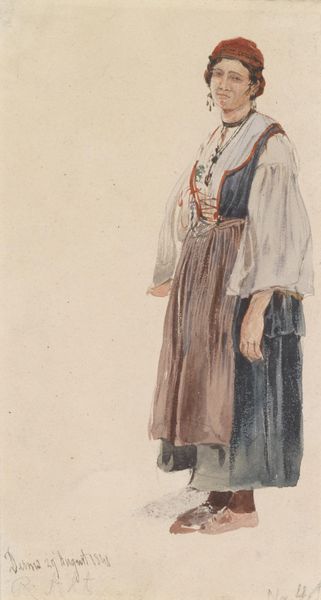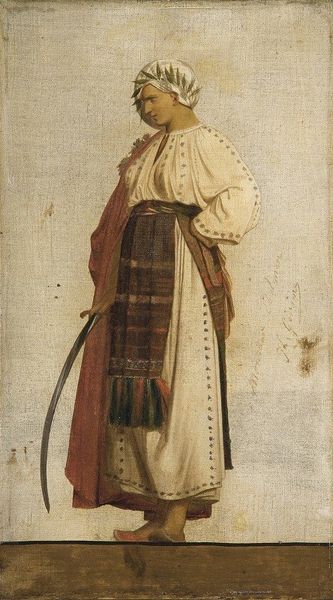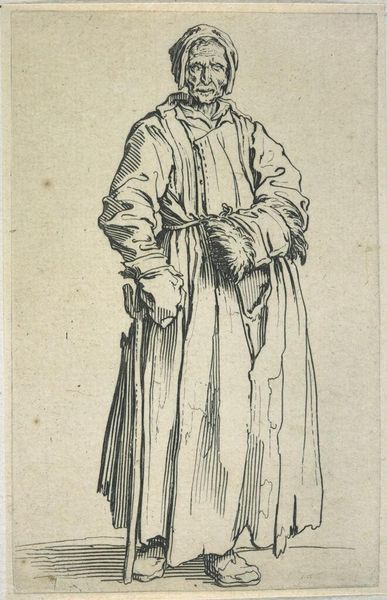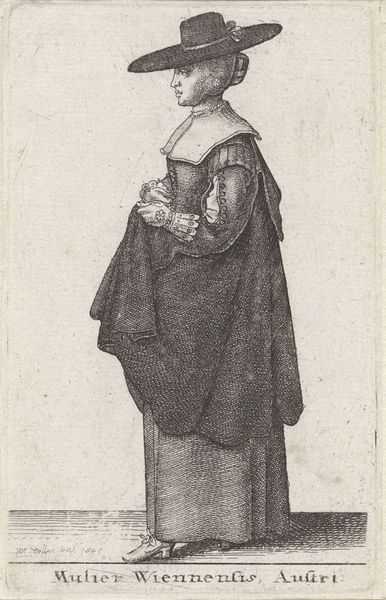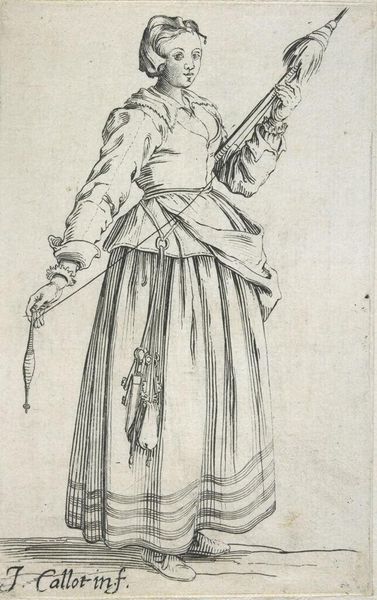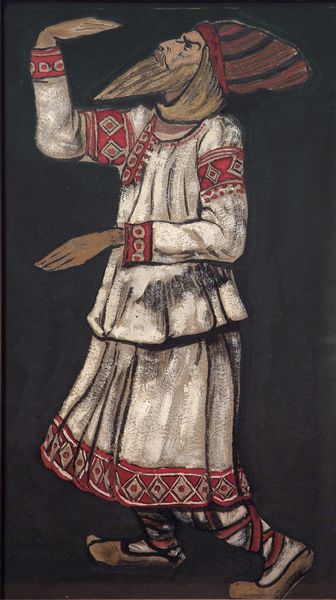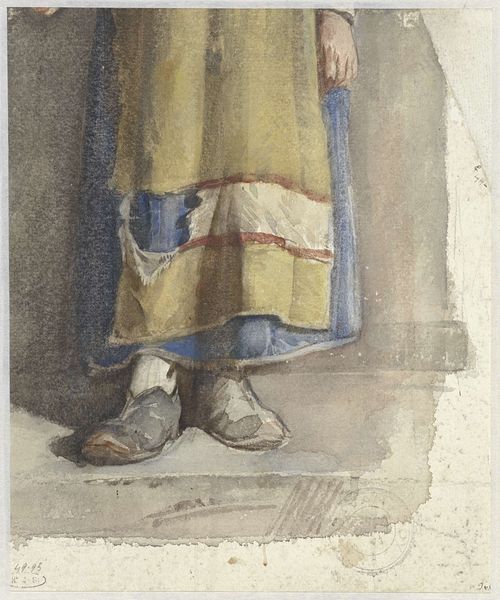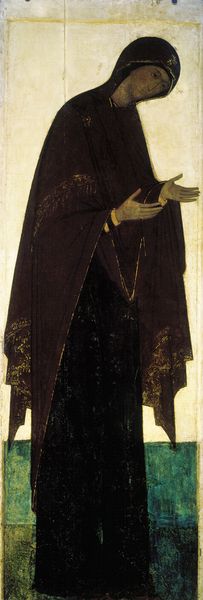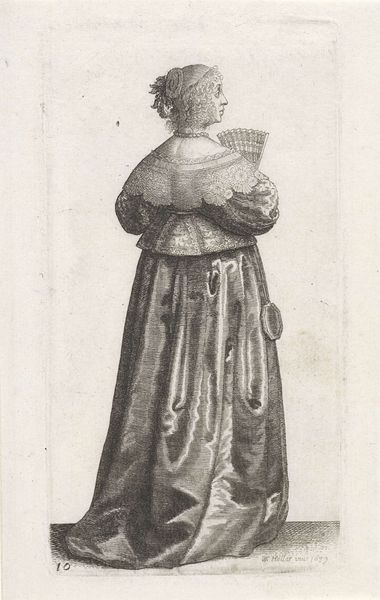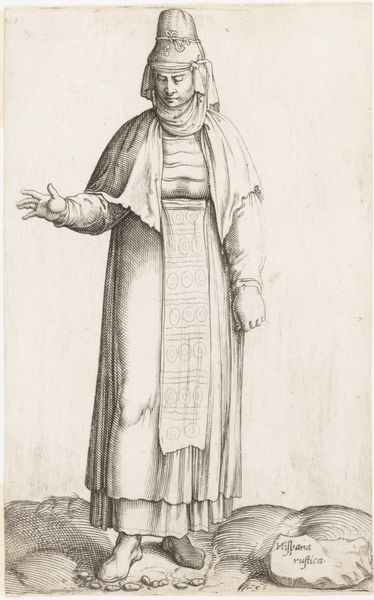
drawing, watercolor
#
portrait
#
drawing
#
watercolor
#
portrait drawing
#
watercolour illustration
#
watercolor
Copyright: Public domain
Curator: This watercolor drawing is Kuzma Petrov-Vodkin's 1923 costume design for Pushkin's tragedy, *Boris Godunov*. Editor: It’s remarkably restrained, isn't it? Somber tones, with a splash of pink, evoke a feeling of both aristocracy and underlying tension, doesn’t it? Curator: Indeed. Let's delve deeper. The color choices are especially intriguing when considering the historical moment. Remember, 1923, shortly after the Russian Revolution, theater was considered the great platform for ideological re-imagination. Here Petrov-Vodkin makes specific choices concerning dress that point back to cultural memory of pre-revolution Russia, while still feeling stark, revolutionary. Editor: I notice the stark contrast between the dark, solid black of the outer garment and the intricate, almost fragile detail of the sleeves. It’s not simply decorative, it seems like it points to hidden fragility and repressed identity within a system. He could be a man torn. Curator: Exactly. His garment is so very telling of his internal conflict! Costume wasn't simply 'clothing' for the stage but instead communicated deep emotional states for Petrov-Vodkin. Consider that *Boris Godunov* tells of political turmoil, the costume can also suggest the complex power dynamics that played out during times of social and political conflict. Editor: Right, and the pose, even in a preliminary sketch, holds that internal conflict; the downturned gaze suggests weariness, of being burdened by more than he can bear. The slight hand gesture is protective, as if to shield some kind of truth, as a man of high status probably would. The use of costume, therefore, allows an engagement of both his internal world and his social placement. Curator: Yes, and by visualizing this struggle of personal feeling in the greater history, Petrov-Vodkin echoes what might happen to individual subjectivities under duress. Editor: Well, by taking into consideration historical Russian symbolic clothing through art, this costume drawing for Boris provides the cultural knowledge, political atmosphere, and deeply sad symbolism of loss and protection. I look at him and see both Tsarist Russia and contemporary struggle within one person. Curator: Petrov-Vodkin is so clever because it allows viewers the emotional awareness to recognize how individual suffering informs the grand stage of politics and how we are each, in our own way, walking tragedies. Editor: It's a simple costume sketch that reveals layer after layer of meaningful cultural and personal history; really captivating, once you begin to look closely.
Comments
No comments
Be the first to comment and join the conversation on the ultimate creative platform.
